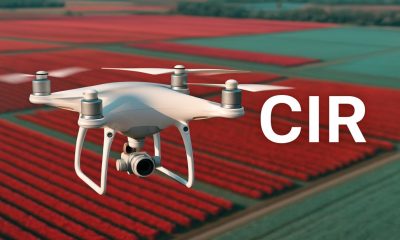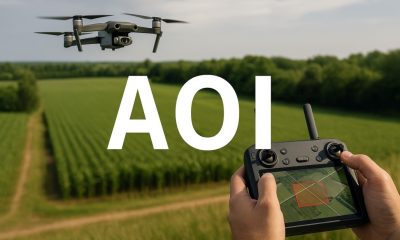- Acronym Guide
- AAM
- ABS
- AC
- ACAS
- ADS-B
- AFAC
- AGL
- AI
- AIM
- ALS
- AM
- AMA
- ANSP
- AOI
- APPI
- AUV
- AUVSI
- ARPAS-UK
- ASTM
- ATC
- BVLOS
- CAA
- CAAC
- CAB
- CASA
- CATT
- CBO
- CBR
- CBRN
- CDMA
- CDR
- CFR
- CIR
- COA
- COMINT
- CORS
- COTP
- COTR
- CPTED
- CV
- C2
- DAA
- DEM
- DFI
- DFS
- DGCA
- DHS
- DOD
- DPA
- DPEs
- DRG
- DRO
- DSM
- DSMX
- DSP
- DSSS
- DTM
- EASA
- EFT
- EO
- EOD
- EO/IR
- ELINT
- EMI
- ESC
- EVLOS
- eVTOLs
- FAA
- FCC
- FCS
- FHSS
- FICCI
- FLIR
- FOB
- FOV
- FPS
- FPV
- GBDAA
- GCP
- GCS
- GDPR
- GML
- GNSS
- GPS
- GSD
- GVC
- HDR
- HOGE
- IACRA
- ICAO
- ICS
- IMU
- INS
- IR
- ISA
- ISR
- ITU
- JARUS
- LAAMS
- LAANC
- LAATM
- LAI
- LBA
- LIDAR
- LOS
- LSALT
- MAC
- MAVLink
- MLIT
- MMS
- MSL
- MTOM
- NDAA
- NCSL
- NFZ
- NIST
- NMEA
- NOTAM
- NPA
- NPRM
- NTIA
- OBIA
- OEM
- OFDM
- OOP
- PASM
- PAV
- PCV
- PdM
- PEC
- PIC
- PID
- PIPL
- PLD
- PM
- PN
- PPK
- PPS
- PSM
- PWM
- UAM
- UAOP
- UAS
- UASTM
- UAV
- UCAVs
- UHD
- UHF
- USV
- UTM
- RAIM
- RCC
- RCS
- RFI
- ReOC
- RePL
- RMS
- ROI
- RPAS
- RPC
- RTH
- RTK
- SaR
- SAR
- SARP
- SBAS
- S.Bus
- SBIR
- SEDENA
- SfM
- SFOC
- SIGINT
- SLAM
- SMS
- SORA
- STANAG
- STTR
- sUAS
- TCAS
- TCCA
- TFR
- TIN
- TOF
- TP
- TPS
- TSA
- VHF
- VLOS
- VTOL
Drone Acronyms
What is USV (Unmanned Surface Vehicle) & How Does it Work?
Published
1 month agoon
By
Jacob StonerTable Of Contents

Definition
A USV, or Unmanned Surface Vehicle, is a watercraft that operates on the surface of oceans, rivers, or lakes without an onboard human presence. It is typically equipped with sensors, navigation systems, and autonomous or remote-control technology. USVs are used for a wide range of marine operations, including environmental monitoring, hydrographic surveying, maritime security, and infrastructure inspection.
Usage
In marine environments, USVs can conduct autonomous patrols, gather real-time water quality data, inspect offshore structures like oil rigs and bridges, or perform sonar mapping of the seafloor. These vehicles may be remotely operated from shore or programmed to navigate autonomously using GPS, radar, and collision-avoidance systems.
Relevance to the Industry
As part of the broader unmanned systems landscape, USVs complement aerial drones by covering surface-based missions where air-based inspection is impractical or inefficient. USVs are increasingly used in coordinated operations involving UAVs, especially in port surveillance, offshore energy, marine research, and search and rescue. Their ability to operate long hours without human fatigue makes them ideal for persistent monitoring and hazardous area operations.
How Does USV (Unmanned Surface Vehicle) Work?
A USV operates on the water’s surface using a combination of autonomous navigation systems, environmental sensors, and remote communications. These vessels are designed to perform long-duration missions without onboard crew, offering a safe, efficient, and cost-effective solution for marine monitoring and inspection. Here’s how they function:
Mission Planning and Deployment
Before launch, operators define the USV’s mission objectives and set waypoints using mapping software. Depending on the task—such as mapping, patrol, or water sampling—the USV is configured with specific sensors and payloads. Deployment can be manual (from docks or ships) or autonomous via remote startup.
Autonomous or Remote Navigation
Once activated, the vehicle uses onboard GPS, inertial measurement units (IMUs), and electronic charts to navigate. It can operate:
- Autonomously, following a pre-programmed route
- Remotely, with real-time control from a shore-based operator or mothership
Advanced USVs also include obstacle-avoidance systems using radar, LiDAR, or cameras to detect and avoid other vessels or floating debris.
Data Collection in Real Time
As the USV moves through the water, it collects data using a variety of sensors, which may include:
- Sonar systems for bathymetric and seafloor mapping
- Cameras and LiDAR for surface structure inspections
- Environmental sensors for temperature, salinity, pH, turbidity, and dissolved oxygen
- AIS transceivers to monitor nearby vessel traffic
The data is stored onboard and/or streamed in real time to command centers via satellite, cellular, or radio-frequency links.
Power and Endurance
Most USVs are powered by batteries, solar panels, or hybrid diesel-electric systems, depending on mission length and energy demands. Some can operate for days or even weeks without refueling or recharging, making them ideal for extended offshore missions.
Multi-Platform Integration
USVs often work in tandem with aerial drones (UAVs), underwater vehicles (AUVs), or static sensors for synchronized multi-domain monitoring. For example, a drone might provide overhead visuals while a USV maps the seafloor, creating a layered dataset for coastal engineers or marine biologists.
Return and Recovery
At the end of a mission, the USV either autonomously returns to a docking station or is recovered manually. The onboard data is offloaded and analyzed, supporting applications from infrastructure assessments to environmental impact studies.
With their ability to gather detailed surface-level and subsurface data across wide areas, USVs provide a powerful alternative to manned vessels for marine monitoring, research, and surveillance—especially in hazardous or hard-to-reach environments.
Example in Use
“During a coastal restoration project, a USV was deployed to monitor turbidity and sediment levels along the shoreline, transmitting data in real time to the environmental research team.”
Frequently Asked Questions about USV (Unmanned Surface Vehicle)
What’s the difference between a USV and an AUV (Autonomous Underwater Vehicle)?
A USV operates on the surface of the water, using GPS and surface-level sensors. An AUV, in contrast, travels underwater and typically performs deep-sea or subsurface inspections.
What types of sensors do USVs use?
Sonar (multibeam or side-scan)
LiDAR or cameras for visual inspection
Water quality sensors (for pH, turbidity, temperature)
AIS and radar for navigation and vessel avoidance
What industries benefit from USV technology?
Environmental and marine research
Oil and gas infrastructure inspection
Port and harbor security
Fisheries and aquaculture
Naval defense and anti-piracy operations
For examples of these acronyms visit our Industries page.
As the CEO of Flyeye.io, Jacob Stoner spearheads the company's operations with his extensive expertise in the drone industry. He is a licensed commercial drone operator in Canada, where he frequently conducts drone inspections. Jacob is a highly respected figure within his local drone community, where he indulges his passion for videography during his leisure time. Above all, Jacob's keen interest lies in the potential societal impact of drone technology advancements.











